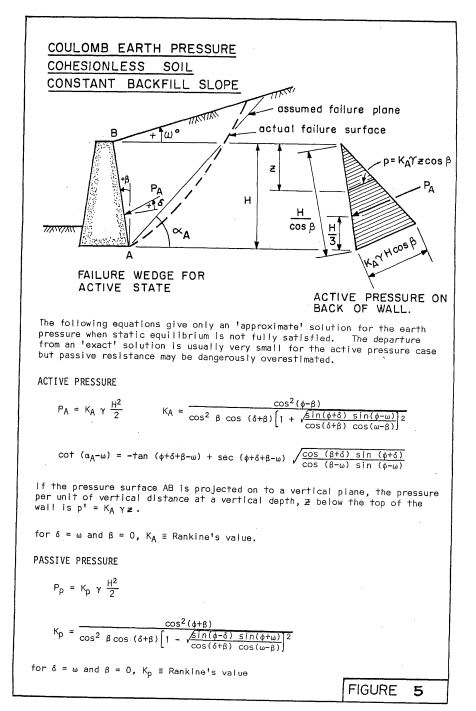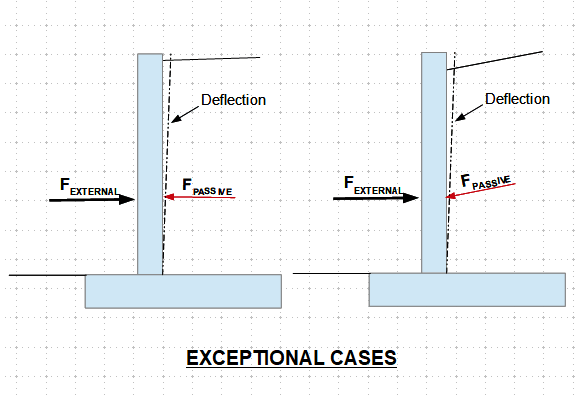Hi All,
I am a structural engineer and I have a simple Geotech question.
Where there is a ground slope on the active side of the retaining wall, that increase thee Ka value when using coloumb theory.
But when the ground slope on the passive side is flat (horizontal), is it reasonable to also have the Kp value increased due to the ground slope on the active side?
According to my Geotech notes from New Zealand (shown below), I interpret it as being yes, it is also ok to increase the Kp due to the ground slope on the active side.
But this feels unconservative. Would like to hear your opinion on this, or if possible please point me towards some relevant literature.
Thanks,

I am a structural engineer and I have a simple Geotech question.
Where there is a ground slope on the active side of the retaining wall, that increase thee Ka value when using coloumb theory.
But when the ground slope on the passive side is flat (horizontal), is it reasonable to also have the Kp value increased due to the ground slope on the active side?
According to my Geotech notes from New Zealand (shown below), I interpret it as being yes, it is also ok to increase the Kp due to the ground slope on the active side.
But this feels unconservative. Would like to hear your opinion on this, or if possible please point me towards some relevant literature.
Thanks,



